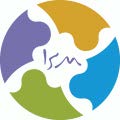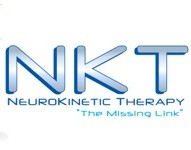I love a good metaphor and I am going to borrow this one from Diane Lee to introduce my therapy toolbox to you. Your initial consultation is your wardrobe. We will combine your injury history, symptoms, movement assessment and hands-on assessment to build the walls, doors and hanging rail. Inside the wardrobe you will find all of the different therapies hung up, neatly arranged and ready to be chosen for an appropriate occasion. If you have a joint problem out comes the osteopathic manipulation or FRC garment, whereas if your issues are more muscular then possibly P-DTR or some massage techniques may be more appropriate. It’s all about finding the right item of clothing for the right event.
Feel free to read on and have a rummage through my therapy closet:

Anatomy in Motion is the ever-evolving brainchild of Gary Ward. Its aim is to unlock the incredible potential that lies within every human body. By observing the body movement during walking it is possible to identify joints, muscles, and postures that are being compromised with every step we take. Alongside a thorough case history, it is then possible to paint a picture as to why there is a pain in the system. It is a way that provides peace of mind and the first step towards healing. The solution is to offer back movement to the body, and if the body finds value in this it accepts it (often immediately). It is as if the body has forgotten how to use certain patterns and it just needs a gentle reminder that movement would be so much easier this way.
Osteopathy is a system of diagnosis and treatment for a wide range of medical conditions. It works with the structure and function of the body and is based on the principle that the well-being of an individual depends on the
We believe that for your body to work well, its structure must also work well. Osteopaths work to restore your body to a state of balance, where possible without the use of drugs or surgery. They use touch, physical manipulation, stretching and massage to increase the mobility of joints, to relieve muscle tension, to enhance the blood and nerve supply to tissues, and to help your body’s own healing mechanisms. Osteopaths train for 4-5 years and are governed by the General Osteopathic Council.

P-DTR or Proprioceptive Deep Tendon Reflex therapy (…a bit of a mouthful) uses manual muscle testing to assess and treat your neurology. Simply (ish) put, we have nerve receptors around our body which continually feed back information to the brain about what is going on. We have nerve receptors that monitor stretching, pain, temperature and even tickle and itch sensation. Once the brain receives this information it then processes it and sends back a message to the muscles to act. For instance if we burn our hand, the heat receptors in the hand send a message to the brain, and our brain sends a message back to the muscles of the arm and hand saying “WITHDRAW!”. This is a marvellous system, however where we start to encounter problems is when the receptors send back faulty information to the brain. Faulty information in results in faulty information out, which can lead to muscle weakness, pain and compensation. P-DTR allows us to break this cycle and prime the system to better accept movement.

The Integrated Systems Model (ISM) is the latest addition to my training and I am so excited about it. Diane Lee is a physiotherapist who is not only versed in all the current research but who also has a ridiculous level of clinical expertise to boot. There has been a lot journeying back and forth to Vancouver to be mentored by her but worth every mile.
So what is the Integrated Systems Model (ISM)? Diane would describe it as “just good old physiotherapy” but I think she is underselling her model. It is all about getting to the root cause of your complaint (even if we have to start looking at the other end of your body!) treating it and reintegrating back into movement – just the kind of therapy I love.Diane is also renowned for her work with post pregnancy issues such as back pain, pelvic pain, prolapse and incontinence and is creating ground breaking work in these areas. Her teachings have really helped me help my mother 40 (something) years after my birth. It is nice to be able to undo some of the damage I created four decades ago!

Neurokinetic therapy (NKT) was developed by David Weinstock in San Fransisco. This brilliant concept of modified muscle testing enables muscle patterns to be assessed and compensations to be understood. Traditional therapy often favours releasing tight joints and massaging sore muscles, however this approach fails to understand why they are working so hard in the first place and often results in chasing pain instead of its cause. If a joint manipulation helps for a couple of days, but then stiffness starts to return, then the joint is restricted for a reason. NKT provides a sophisticated assessment and treatment modality that helps to understand the cause of these poor movement patterns and instantaneous feedback that guides your journey to pain free movement.

Functional Range Conditioning (FRC) was created by Andreo Spina to train joints and everything that supports them. If only someone had created an evidence based system to become stronger and more mobile when I was a dancer! FRC gives people the prerequisites to move well in what ever sport or activity they should choose. The system begins by making sure that each and every joint can move well, while simultaneously strengthening and controlling this new found movement with appropriately challenging exercises. Ultimately this isolation is integrated into movement patterns to train the nervous system and control your new range. Apart from the numerous acronyms used to describe the movements, FRC is incredibly simple in its intention, but oh so powerful. Here is a link to the CARs routine Andrea developed as a daily practice. I use it myself and with my personal training clients daily.

The Perrin technique was created by the Osteopath Dr Raymond Perrin who has spent over 30 years researching and treating ME and fibromyalgia. His research has demonstrated that both diseases are as a result of lymphatic back flow to the brain resulting in toxic overload which would explain the many varied symptoms experienced. I spent some time with Dr Perrin in his clinic in Manchester and his enthusiasm and knowledge was infectious. He taught me how to combine manual techniques to regulate the sympathetic nervous system and stimulate the lymphatics and cerebrospinal fluid in order to pump away this toxic overload. I believe his work empowers sufferers not only with an understanding of the disease but also teaches simple self treatments so that the work we do in clinic can continue between sessions.

